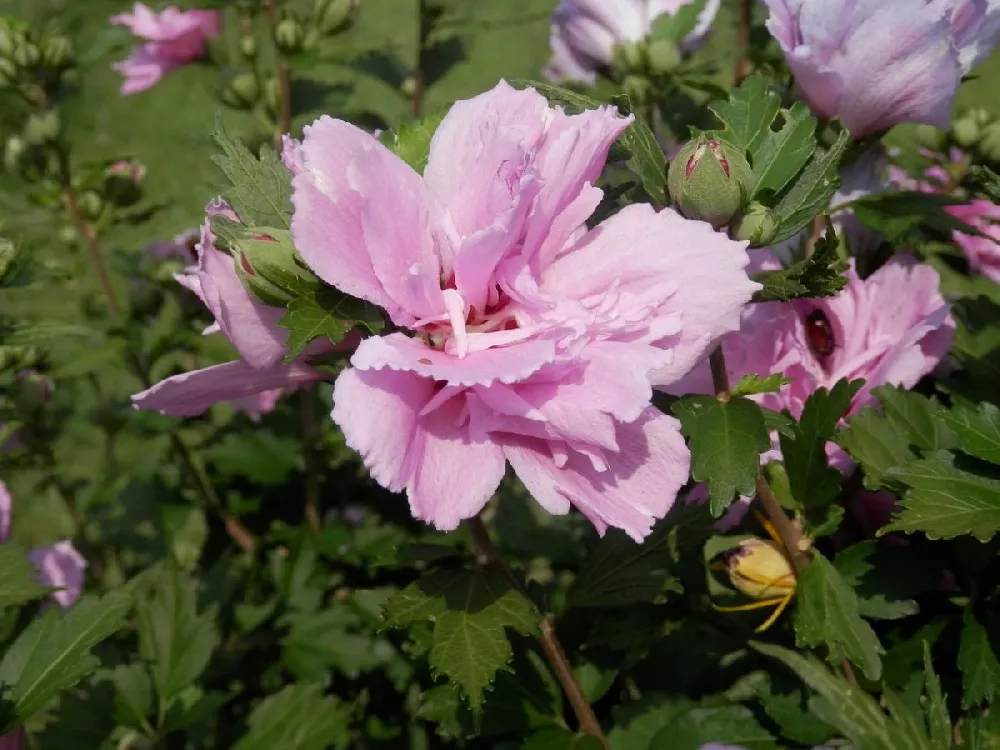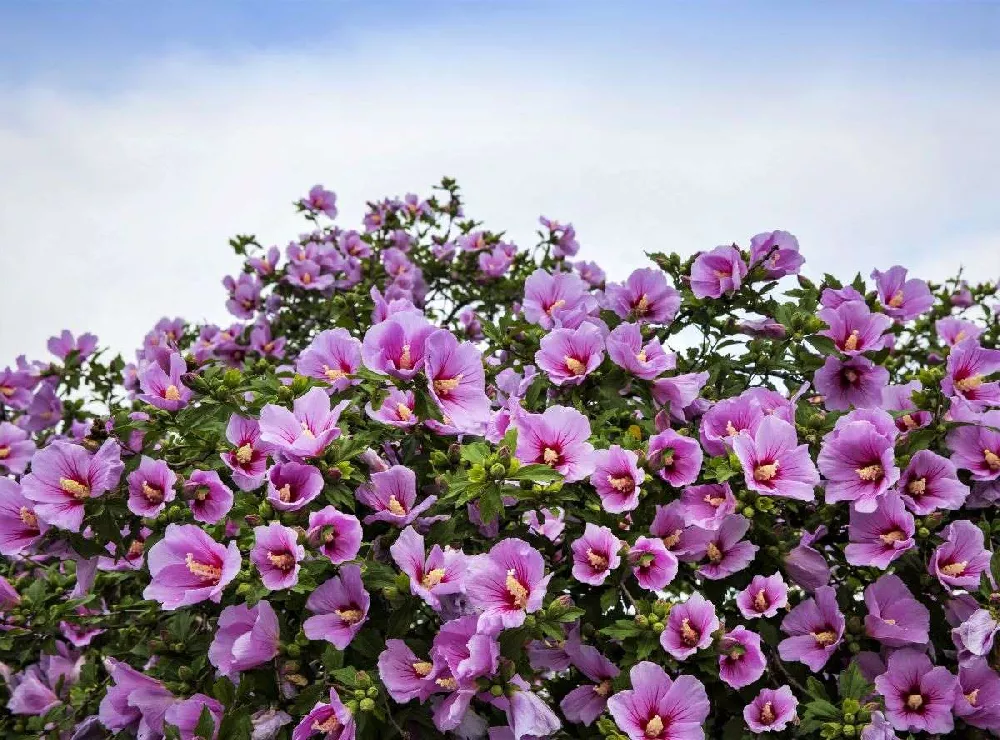- Home >
- Flowers >
- Trees and Plants with Pink Flowers >
- Pink Rose of Sharon Althea Tree
Pink Rose of Sharon Althea Tree for Sale - Buying & Growing Guide
If you are looking for a dependable, long-blooming, easy-care small tree for your landscape, look no further than Pink Rose of Sharon Althea Tree, Hibiscus syriacus 'Pink'. Pink Rose of Sharon is a quiet, attractive tree in the garden — except when it's blooming, and then it's spectacular. The best part? It blooms throughout the growing season and is generally covered in large, fluffy pink blooms that will have the neighbors asking you what you're growing. The neighbors aren't the only ones interested: pollinators such as butterflies and hummingbirds are drawn to the showy blossoms, so your yard will be alive with their activities. This lovely tree is easy to grow and takes little extra effort to thrive, even in less-than-ideal soils. Need some more reasons to purchase one or more? Here are three:
- It grows throughout much of the continental U.S.
- It is resistant to pests and diseases.
- It can be grown as a patio plant in a large pot.
Enter your zip code to find nearby stores that may carry this plant.
Plant Care
Sunlight

Pink Rose of Sharon Althea tree does best in partial to full sun — 4 or more hours of direct light a day.
Watering
Water your tree about once a week when the soil 2 inches below the surface is dry.
Fertilizing

Fertilize with a balanced product designed for landscape trees, such as a 10-10-10 formula.
Planting and Care
Planting instructions
Site your Rose of Sharon where it will get at least 4 hours of direct sunlight a day, in soil that drains well. Blooms will be more profuse if planted in full sun. Unpot your tree and tease out any encircling roots, which can girdle the tree and slowly kill it. Dig a hole that’s as deep as the root ball and twice as wide. Place the tree in the hole, spreading out the roots. Holding the tree upright and steady, fill in around it with topsoil, tamping down as you go to eliminate air pockets. Water thoroughly. Apply a 2- to 3-inch layer of organic mulch such as bark chips around the root zone to conserve moisture and hinder weed growth, but keep it from touching the trunk, which can encourage rot.
Watering and nutrients
Water newly planted Rose of Sharon trees every few days until you start to see robust new growth on the branches. Then cut back to once-a-week watering. A mature tree is somewhat drought-resistant. You can check to see if it needs water by looking at the soil 3 inches below the surface. If it’s dry, give your tree a drink. Fertilize your Rose of Sharon in spring with a balanced formula, such as 10-10-10, preferably a product that is designed for landscape trees and shrubs.
Pollination
Pink Rose of Sharon Althea tree is a pollinator magnet, attracting bees and other pollinating insects and birds throughout the summer. Pollinated blooms lead to small green seed pods that eventually dry out and turn brown. The seed pods contain five lobes that will eventually split open and disperse the seeds, which provide food for birds during the winter months.
Pruning
Prune your Rose of Sharon in the fall after the leaves drop off. Prune out any dead, diseased or damaged branches, as well as any that are crossing and rubbing against each other. Also, remove suckers that may appear near the base of the trunk. You may prune your tree lightly to shape it, and it’s a good idea to remove some of the older branches to encourage new growth.
Pests and diseases
Pests that may occur on your Rose of Sharon include Japanese beetles and aphids. You may purchase traps for Japanese beetles. A healthy tree can usually fend off aphid attacks, though you can help by spraying a strong stream of water from your hose onto the tree’s leaves. Diseases that may impact your tree include leaf spot and leaf rust, both of which are fungal in nature. Keep the area around your tree clean and free of leaf litter and debris, and prune your tree to open up the center for better circulation to keep fungal disease to a minimum.
Achieving maximum results
One way to maximize your results with the Pink Rose of Sharon Althea tree is to consider growing it in a container. This may be useful if you live north of its natural range or if you have a small garden. Rose of Sharon adapts well to being pot-grown and does not need much extra care if you do so. Choose a container that is roughly twice the size of the root ball, with good drainage holes in the bottom. Use a good-quality potting mix and carefully monitor the water needs of your plant. Container-grown trees and shrubs often need more water than those grown in the ground. If you live in an area that’s too cold for growing these trees, bring your potted plant to a sheltered location such as a basement or garage in the winter.
FAQs
Where can I grow Pink Rose of Sharon Althea tree?
These trees are fairly hardy and can grow outside wherever temperatures don't go below -10 degrees Fahrenheit. That includes USDA hardiness zones 5-9, which encompass most of the U.S. with the exception of the northern Midwest and New England.
How big will this tree get?
A mature Rose of Sharon tree may reach a height of 8-12 feet, with a width of 6-10 feet. If you are growing your tree in a container, it will probably remain smaller than this as it will be constrained by the dimensions of the pot. You can control the height and width through careful pruning.
How is Pink Rose of Sharon Althea tree best used in my landscape?
This small tree makes an excellent specimen tree. Consider planting a grouping of three or five in a front yard, surrounded by gravel and a low stone edging. Two planted on facing sides of a formal front entrance would be handsome, and a row lining a long driveway would be lovely when they are in bloom. You can also use a line of them to create a privacy screen or windbreak, planting them slightly closer together than you normally would.
Compare Similar Products
You can't add more Product Name - Product size to the cart.
OK








